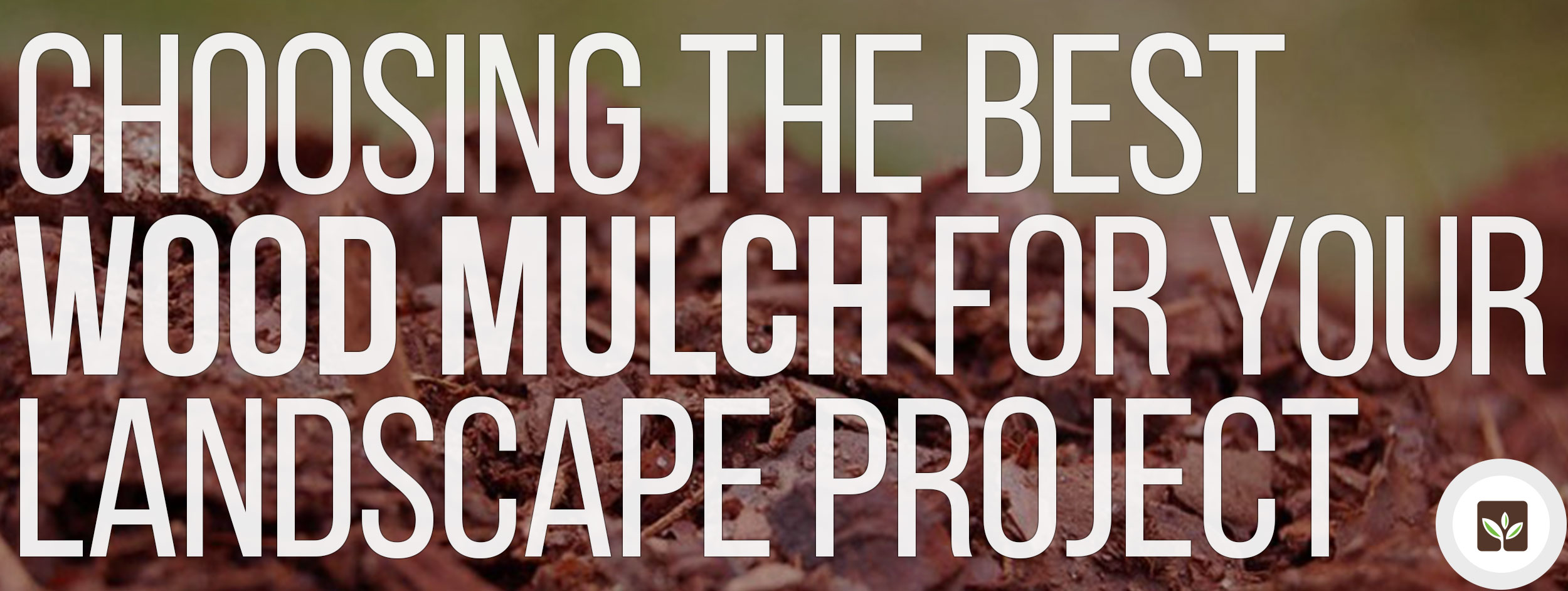
Choosing the Best Wood Mulch For Your Landscape Project
Whether you own a home or business, maintaining a beautiful landscape can create an attraction that is undeniable. Deciding how to enhance the look of your property can be a tough decision if you’re not familiar with your choices and their benefits, specifically when it comes to landscape coverings.
There are quite a few choices when it comes to materials to add to your landscape: plants, flowers, rocks, and many variations of mulch just to name a few. One of the most popular choices that you are certain to have seen in your neighborhood and around town is wood mulch. With so many types of mulch to choose from, you’re probably wondering which one is best for your home or business landscape project?
What Is Mulch?
Mulch comes in many forms and is made from many different materials. Tree bark, newspaper, leaves, compost, pine straw, plastic, rubber, and grass are just a few types of mulches. As unique as they all are, the commonality between all of them is that the material is shredded or broken down into tiny pieces.
When it comes to most landscapes where increasing curb appeal is the goal, the most common mulches used are wood materials such as wood chips, tree bark, pine straw, and occasionally sawdust. Although there are pros and cons to all types of mulch, knowing how you’ll use the mulch should be your deciding factor.
Types of Wood Mulch
Even though we’ve narrowed it down to one mulch material as our focus, there are still many types of wood mulches to choose from. Given the project requirements and appearance you want to achieve, factors such as color, soil type, and texture all need to be considered during the planning stages.
When choosing a wood mulch, the three main factors you’ll most likely need to have in mind are color, where you’ll be using it, and the purpose for using mulch. Wood mulch comes in colors from light to dark brown based on the type of wood it is. There are also various textures of wood. Wood chips and tree bark are thicker cuts of mulch, while mulches made from sawdust and straw are a much finer, shredded material and may feel softer to the touch.
Let’s take a look at the most common types of wood mulch and their individual uses and benefits in order to help you narrow down your selection.
Wood Chips and Bark Mulches
Two of the most common wood mulches, wood chips and tree bark mulches, are known for retaining water for plants and shrubbery. These are especially great options when adding mulch to flower beds or around shrubs. Aside from flower beds, wood chips are a great choice for playground mulch. Large commercial landscape projects are ideal for wood chip and bark as well.
Wood and bark mulches both hold up great year round and they also allow water into the soil to nourish your plants. Cedar wood mulches are known to be great for weed and pest prevention. If your area has a termite problem, the natural cedar oils will help to deter them.
Due to the size of wood and tree bark pieces, these types of mulches also allow your plants to breath, which is vital for planting soils. If your purpose for applying mulch is to help nourish your plants, then wood chips and bark mulches are ideal as the size also gives you room to add fertilizer that will be able to get to the soil. Keep in mind that wood mulch alone will not provide enough nutrients for your plants, so don’t count on it to do all of the work.
Sawdust Mulch
Sawdust mulch is easy to find and has many uses. While it can be used to nourish plants and crops that require acid, businesses can highly benefit from using sawdust mulch on their landscape as well.
Areas where water or spills are an issue, using a sawdust mulch is ideal to not only enhance the look of your business, but to also soak up those unwanted spills. As a decorative mulch, sawdust is only a viable option if it’s placed in very low trafficked, small areas due to its light weight and tendency to be easily blown or moved around.
Pine Straw and Pine Needles
Mulches made from pine straw or hay are typically used for vegetable gardens, as these materials can be mixed back into the soil when they decompose. These types of mulches also hold up great during cold winter months as they insulate the soil and help to prevent plants from becoming frostbitten.
Pine needle mulch is another great choice for low traffic areas. This is also a wonderful way for residential properties to add those special touches around tree lines at a low cost. Additionally, pine needles give off a fresh scent of pine as an added bonus. Pine straw, hay, and pine needle mulches are all cost effective and are readily available year round.
Time To Decide
Now that you have a better understanding of the benefits and different types of wood mulches, hopefully you can make an informed decision when planning your landscaping project. While all of these mulches can be used residentially or commercially, we recommend that you use wood chips or barks for larger projects as the other mulches require lots of clean up and year round maintenance.
Whichever mulch you decide to go with, feel free to use GetMulch.com to help you select which wood mulch is best for your project. If you’re ready to start your mulch project, GetMulch.com is also where you can request a quote from one of our professional mulch installers in your area.
Categories: Mulch Types, South Carolina Mulch | Tags: Business Mulch, Commercial Mulch, Mulch Types, Residential Mulch, South Carolina Mulch